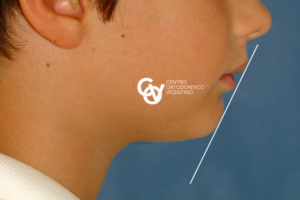
Sleep disorders can also affect children
Many children, even very young ones, snore habitually, others intermittently, and not necessarily in the presence of obstructive sleep apnea syndrome – OSAS.
Sleep disorders: what are the consequences?
It is important that the sleep apnea syndrome is recognized and treated early because otherwise it can cause delays in the child’s growth, changes in the development of the facial massif, associated with an increased risk of chronic catarrhal otitis, gastroesophageal reflux or, in severe cases, to develop diabetes, high blood pressure or cardiovascular diseases such as arrhythmias.
Are there any symptoms associated with habitual snoring that we should notice?
Yes, associated with repeated and continuous snoring (not necessarily confirming the pathology) as parents we can notice some signs that invite us to seek the opinion of the pediatrician.
They can be roughly divided into nocturnal and daytime symptoms.
Nocturnal symptoms:
- pauses during breathing
- restless sleep with frequent changes of position
- sweating
- enuresis (pee in bed)
- bruxism (grinding teeth)
- tendency to breath with the mouth
Daytime symptoms:
- restlessness and hyperactivity
- headache
- aggression and irritability
- lack of attention and loss of concentration in school
- drowsiness (only in some cases, unlike adults)
What are the causes of sleep disorders?
The reduction of air flow can be complete or partial and can be linked to different conditions that predispose to apneas such as:
- hypertrophy (enlargement) of tonsils and adenoids
- allergies, allergic rhinitis or asthma
- anomalies in the structure of the skull or face (not deformations, for ex. a particularly elongated face)
- presence of dental malocclusions, a narrow palate, a retrusion of the jaw
- obesity with narrowing of the upper airways caused by the accumulation of subcutaneous fat
The diagnosis and the role of orthodontics:
This syndrome must be diagnosed by the doctor and it is often the pediatrician who confirms it. At other times, the pediatrician uses the opinion of the ENT specialist or the dentist-orthodontist; teamwork is essential in such cases.
The importance of the orthodontist’s role in the process of recognizing the signals that can favor the establishment of an OSAS framework and in their treatment is increasingly emphasized. During the check up, the specialist will do some questionnaires to the child and the parents and will carry out a complete examination of the child’s bone, dental and soft tissue components.
A consultation of the ENT specialists is also often clarifying: it will evaluate the airways and prescribe polysomnography, a thorough and non-invasive examination, which can be performed starting from 3 years of age, which records the physiological parameters of the baby during a night’s sleep (brain waves, blood oxygen saturation, chest movements, etc.). Through the latter it will be possible to ascertain the presence of apneas during sleep.
In the presence of adenotonsillar hypertrophy, the ENT specialist will evaluate whether to perform surgery to remove tonsils and adenoids, or whether to prescribe specific drug therapies.
Once the diagnosis has been confirmed
…and, if causes are to be found at the oral level, the pediatric orthodontist will formulate a treatment plan in synergy with the ENT specialist. Thanks to the application of specific orthodontic devices aimed at correcting related anomalies, it could for example espand the palate with a rapid expander which will also increase the air flow passing through the airways, allowing the tongue to find enough space to position itself correctly. If the jaw is set very further back (retruded), will be able to correct its position with specific removable equipment called mandibular advances, used as early as 4 years of age because skeletal alterations are established early. In pediatric cases, the orthodontist will evaluate them according to the malocclusion and the direction of growth of the young patient.


In our dental office
You can find the figure of the sleep pathology expert who is always available for patients, or for those who manifest the main symptoms of obstructive sleep apnea syndrome, such as night snoring, continuous daytime sleepiness, extreme fatigue and loss of energy, depression or irritability, difficulty in concentrating, morning headache.
If you doubt that you could suffer from it, call our secretary office or come directly to our dental office and we will evaluate together the problem entity with an interceptive visit.
